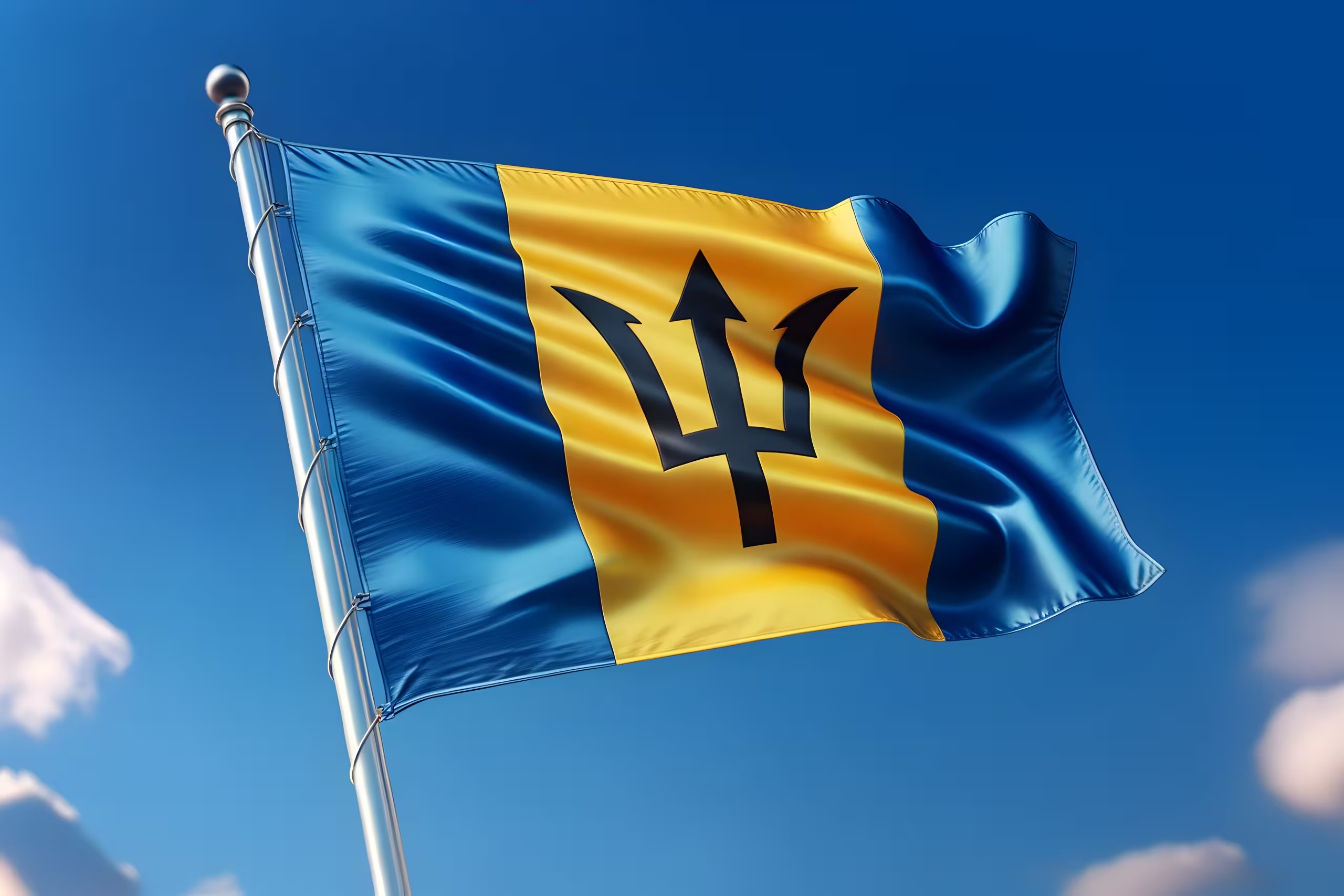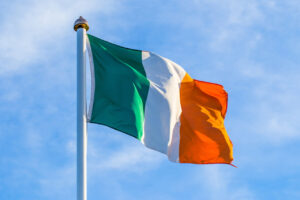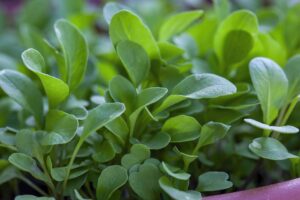Tree Removal Barbados: Laws, Permit, Application & Cost
Are you considering removing a tree from your property in Barbados? Whether you’re planning a construction project, dealing with a hazardous tree, or simply redesigning your landscape, understanding the legal requirements and costs associated with tree removal in Barbados is essential. This comprehensive guide will walk you through everything you need to know about tree removal laws, permit applications, and associated costs in this beautiful Caribbean nation.
Understanding Barbados Tree Protection Laws
Barbados, like many nations with valuable natural resources, has established specific regulations to protect its trees and forests. The island nation recognizes the ecological importance of its tree population, which helps prevent soil erosion, provides habitat for wildlife, contributes to air quality, and maintains the island’s natural beauty.
The Trees (Preservation) Act
The primary legislation governing tree removal in Barbados is the Trees (Preservation) Act, which is administered by the Town and Country Planning Department (TCPD). This act designates certain trees as “preserved trees” and establishes regulations for their management and removal.
Under this legislation, you cannot cut down, top, lop, or willfully damage any preserved tree without first obtaining permission from the Chief Town Planner. This protection extends to trees in designated conservation areas as well as individually protected specimens that hold ecological, historical, or cultural significance.
You can reference the full text of the Trees (Preservation) Act on the Barbados Government Information Service website.
Protected Tree Species
Several tree species in Barbados receive special protection due to their significance to the island’s ecosystem and cultural heritage. These include:
- The Baobab Tree
- Bearded Fig Tree (Ficus citrifolia)
- Mahogany
- Silk Cotton (Kapok)
- Casuarina (Beach Pine)
- Royal Palm Plant: Safe for Dogs & Cats | Indoor & Pet Friendly” target=”_blank” rel=”noopener”>Royal Palm
Removing any of these species typically requires additional scrutiny during the permit application process, and permission may be granted only under exceptional circumstances.
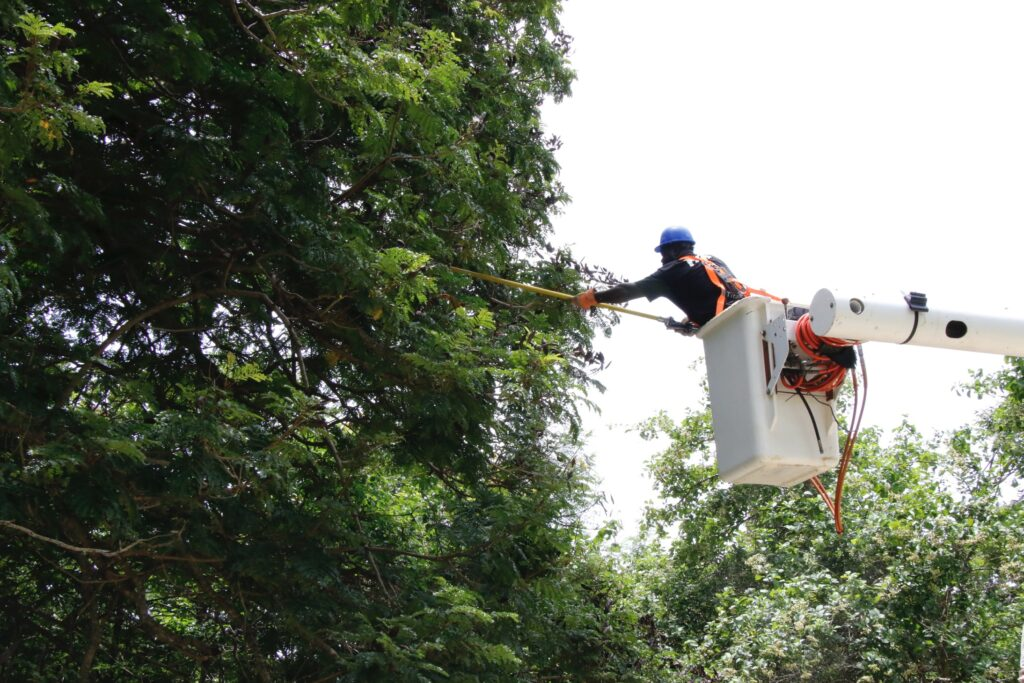
When Do You Need a Tree Removal Permit in Barbados?
Not all tree removal activities require a permit, but it’s always advisable to check with authorities before proceeding. Here are the common scenarios when a permit is definitely required:
Preserved Trees
If the tree in question has been designated as a “preserved tree” by the Town and Country Planning Department, you must apply for permission before any work can commence. These trees are protected due to their age, size, species, or location.
Trees in Conservation Areas
Trees located in designated conservation areas, national parks, or protected zones are subject to stricter regulations. The removal of such trees typically requires approval from both the Town and Country Planning Department and the National Conservation Commission.
Large Mature Trees
Even if a tree isn’t officially “preserved,” mature trees exceeding certain dimensions (typically those with a trunk diameter greater than 6 inches when measured at 5 feet above ground level) often require a permit before removal.
Trees Affecting Public Infrastructure
Trees located near roads, utility lines, or other public infrastructure may require permission from both the TCPD and the relevant utility company or government department before removal.
The Permit Application Process
Navigating the permit application process requires attention to detail and proper documentation. Here’s a step-by-step guide to help you through the process:
Step 1: Assessment and Documentation
Before applying, gather the following information:
- Location of the tree(s) to be removed (property address and GPS coordinates if available)
- Species of tree(s)
- Diameter of the trunk(s) measured at breast height (approximately 5 feet above ground level)
- Photographs of the tree(s) from multiple angles
- Reason for removal
- Proposed date of removal
- Details of the contractor who will perform the work (if applicable)
Step 2: Submit Application to the Town and Country Planning Department
The official application can be obtained from the Town and Country Planning Department located in Warrens, St. Michael. The application must be completed in full and submitted along with:
- Proof of property ownership or written permission from the property owner
- Site plan showing the location of the tree(s)
- Documentation gathered in Step 1
- Application fee (see cost section below)
Step 3: Site Inspection
After receiving your application, the TCPD will schedule a site inspection. An environmental officer or arborist will visit your property to assess the tree(s) and verify the information provided in your application.
Step 4: Application Review
The TCPD will review your application, taking into consideration:
- The health and condition of the tree
- The tree’s ecological importance
- Any risk the tree may pose to persons or property
- The reason for removal
- Proposed replanting plans (if applicable)
Step 5: Decision and Conditions
You will receive notification of the decision within 2-4 weeks. If approved, the permit may come with specific conditions, such as:
- Time frame for completing the removal
- Methods to be used
- Requirement to plant replacement trees
- Supervision requirements
- Waste disposal instructions
Costs Associated with Tree Removal in Barbados
The expenses involved in removing a tree in Barbados can vary significantly based on several factors. Here’s a breakdown of the potential costs you might incur:
Permit Application Fees
The basic application fee for a tree removal permit is relatively modest, typically ranging from BBD $50 to $150 (approximately USD $25 to $75), depending on the number of trees and their protected status.
Professional Assessment Costs
If your situation is complex or if you’re dealing with protected species, you might need to hire an arborist to conduct a professional assessment. This service typically costs between BBD $200 and $500 (USD $100 to $250).
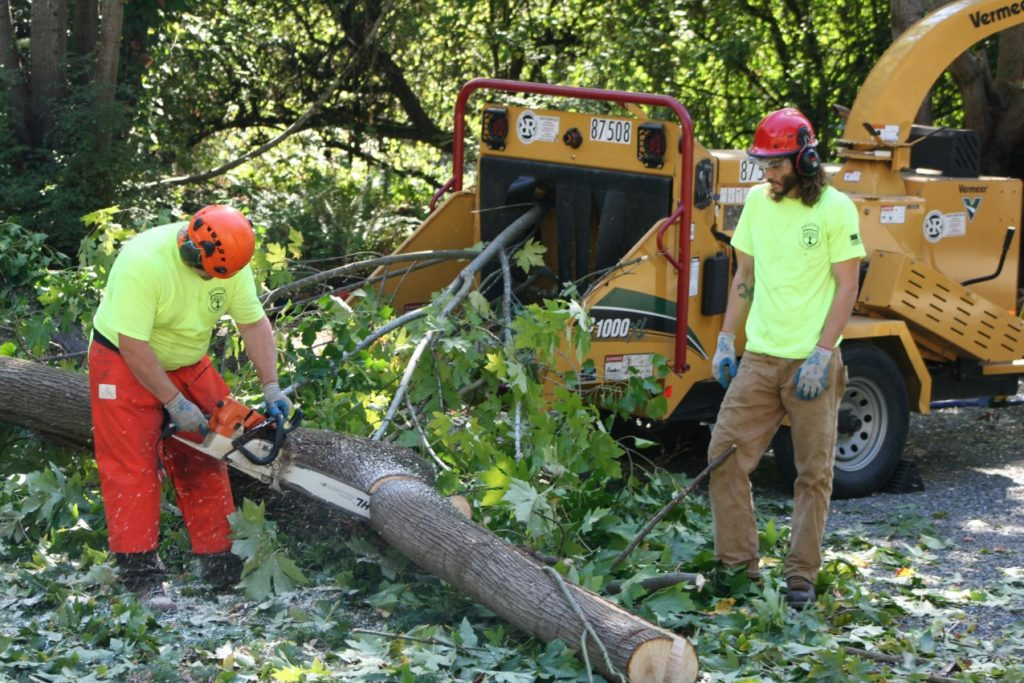
Tree Removal Service Costs
The actual removal cost varies based on multiple factors, as shown in the table below:
| Tree Size | Average Height | Diameter at Breast Height | Typical Cost Range (BBD) | Typical Cost Range (USD) |
|---|---|---|---|---|
| Small | Up to 20 ft | Less than 6 inches | $300 – $600 | $150 – $300 |
| Medium | 20 – 40 ft | 6 – 12 inches | $600 – $1,200 | $300 – $600 |
| Large | 40 – 60 ft | 12 – 24 inches | $1,200 – $2,500 | $600 – $1,250 |
| Very Large | Over 60 ft | Over 24 inches | $2,500 – $5,000+ | $1,250 – $2,500+ |
Additional Cost Factors
Beyond the basic removal costs, these factors can significantly impact the final price:
Accessibility
Trees located in difficult-to-access areas, such as those close to buildings, power lines, or on steep terrain, will cost more to remove safely. Expect a premium of 25-50% for complicated access situations.
Species Characteristics
Some tree species are more challenging to remove due to their wood density, growth pattern, or root structure. Hardwood trees like mahogany typically cost more to remove than softer varieties.
Stump Removal
Basic tree removal services often don’t include stump removal. Adding stump grinding typically costs an additional BBD $100-$300 (USD $50-$150) depending on the stump size.
Waste Disposal
Some companies include debris removal in their quote, while others charge extra. If debris removal isn’t included, expect to pay an additional BBD $200-$500 (USD $100-$250) depending on the volume of material.
Emergency Services
If you need emergency tree removal due to storm damage or immediate hazards, expect to pay a premium of 50-100% above standard rates.
Alternatives to Tree Removal
Before proceeding with tree removal, consider these alternatives that might better serve your needs while preserving Barbados’ natural heritage:
Tree Trimming and Pruning
For trees that block views, drop excessive debris, or have overhanging branches, professional pruning can often address these issues without complete removal. Pruning costs typically range from BBD $200 to $800 (USD $100 to $400), depending on the tree size and complexity.
Root Barrier Installation
If tree roots are threatening structures or pavement, installing root barriers can prevent further damage while allowing the tree to remain. This service typically costs BBD $400 to $1,000 (USD $200 to $500).
Relocation
For smaller or particularly valuable trees, relocation might be possible. Tree relocation is more expensive than removal, typically costing 2-3 times more, but it preserves the tree while addressing your needs.
Legal Implications of Unauthorized Tree Removal
Removing protected trees without proper authorization can result in significant penalties. Under the Trees (Preservation) Act, violations can lead to:
- Fines ranging from BBD $5,000 to $50,000 (USD $2,500 to $25,000)
- Potential imprisonment for severe or repeat offenses
- Mandatory replanting requirements
- Restoration orders requiring you to plant multiple replacement trees
- Legal costs and court fees
Additionally, unauthorized tree removal can complicate property transactions, as prospective buyers or their attorneys might discover the violation during due diligence.
Environmental Considerations and Replanting Requirements
Barbados places strong emphasis on maintaining its tree cover, especially given the island’s vulnerability to erosion and the ecological benefits trees provide. As such, most tree removal permits come with replanting requirements.
Typical Replanting Requirements
The standard requirement is to plant at least one new tree for each tree removed, though this ratio may increase for especially valuable or mature specimens. The Town and Country Planning Department often specifies:
- The number of replacement trees required
- Acceptable species (typically native or well-adapted non-invasives)
- Minimum size of replacement trees
- Planting locations
- Timeframe for replanting
- Monitoring period to ensure establishment
Recommended Native Species for Replanting
When replanting is required, consider these native or well-adapted species that contribute to Barbados’ biodiversity:
- Barbados Cherry (Malpighia emarginata)
- West Indian Mahogany (Swietenia mahagoni)
- Yellow Poui (Tabebuia serratifolia)
- Silver Buttonwood (Conocarpus erectus var. sericeus)
- Sea Grape (Coccoloba uvifera) for coastal properties
- Flamboyant (Delonix regia)
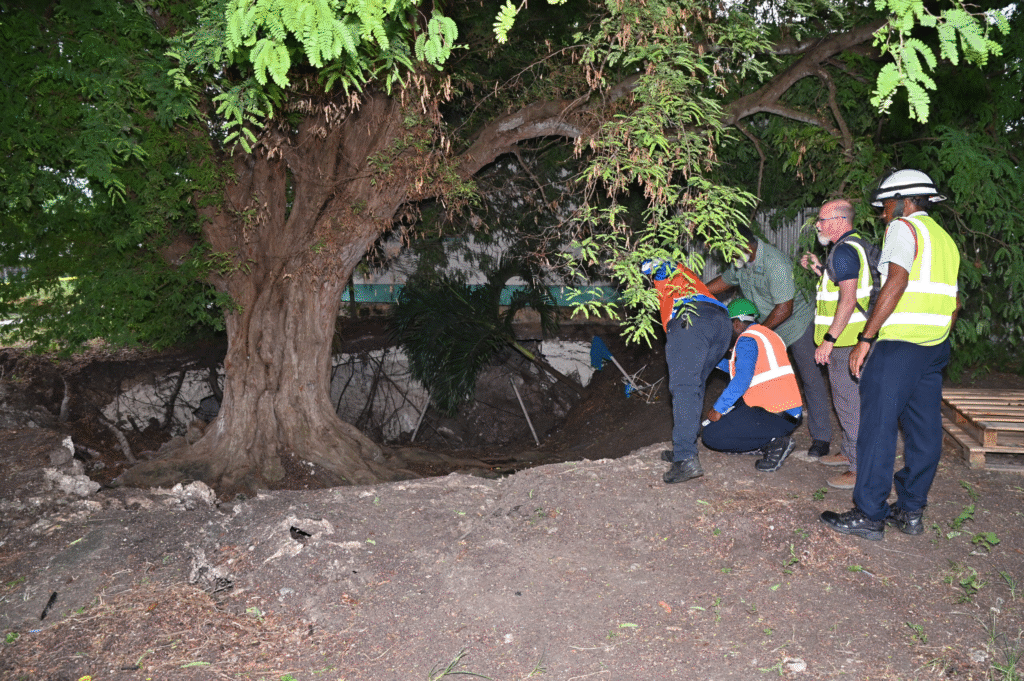
Hiring a Professional Tree Service in Barbados
For safety and compliance reasons, it’s highly recommended to hire professional tree service providers. Here’s what to look for:
Qualifications and Insurance
Verify that any contractor you hire:
- Is licensed to operate in Barbados
- Carries adequate liability insurance
- Has workers’ compensation coverage for their employees
- Can provide references from previous clients
- Has experience with the specific type of tree you need removed
Questions to Ask Before Hiring
- Are you familiar with the Trees (Preservation) Act requirements?
- Will you handle the permit application process, or is that my responsibility?
- Does your quote include stump removal and debris disposal?
- What safety measures do you employ during removal?
- Can you provide proof of insurance and licensing?
- Do you offer any guarantees on your work?
Seasonal Considerations for Tree Removal
Timing can impact both cost and environmental impact when removing trees in Barbados:
Optimal Timing
The dry season (December to May) is generally considered optimal for tree removal because:
- Harder ground conditions make it easier for equipment to access the site
- Less rainfall means reduced risk of erosion after removal
- Lower demand for emergency services typically means better availability and potentially lower costs
- Replanting immediately afterward gives new trees the benefit of the upcoming rainy season
Hurricane Season Preparations
June through November marks hurricane season in Barbados. If you have potentially hazardous trees, it’s advisable to address them before this period begins. Many tree service companies offer pre-hurricane season inspections to identify trees that might pose risks during storms.
Conclusion
Tree removal in Barbados requires careful navigation of legal requirements, environmental considerations, and practical execution. By understanding the permit process, associated costs, and alternatives to removal, you can make informed decisions that comply with regulations while meeting your property management needs.
Remember that Barbados’ trees are not just private property assets but also part of the nation’s natural heritage and ecological infrastructure. The regulations governing their removal exist to balance property rights with environmental protection, ensuring that this beautiful island maintains its natural character for generations to come.
For the most current information regarding tree removal regulations and application procedures, visit the Town and Country Planning Department section of the official Barbados Government website or contact them directly at their offices in Warrens, St. Michael.
